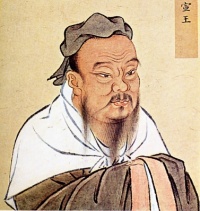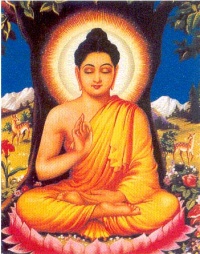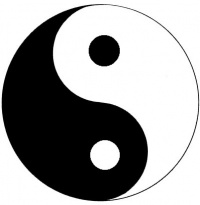From The Peopling of New York City
Contents |
Religions of the Early Immigrants
In October of 1869, the Protestant Episcopal Board of Missions warned, "The most inveterate, oriental heathenism transplanted to our soil...may yet strive for political ascendancy on this continent." The solution that was proposed was for Christians to "convert them as soon as possible, in addition to educating them."[1]
The very first Chinese to arrive in New York were usually of traditional Chinese beliefs, which were Confucianism, Ancestral Worship, Buddhism, or Daoism. At first, very few immigrants converted to Christianity upon arrival to the U.S. The minority of Chinese Christians were, for the most part, Protestants who had been converted back in their homeland by missionaries. During the first wave of Chinese immigration, up to around the time of the Chinese Exclusion Act of 1882, less than twenty percent of the Chinese immigrants accepted Christianity.
Confucianism
Confucianism was developed from the teachings of the Chinese philosopher Confucius. It focuses on right action, and works as a complex system of moral, social, philosophical, political, and religious ideas. It is not actually a religion, but rather a system of ethics or humanism.
Ancestral Worship
Ancestral worship or veneration is based on the concept that family members continue to exist after their deaths. They take interest in the world's affairs and can influence the lives of the people on Earth. The goal of ancestral veneration is to ensure ancestors' well-being and sometimes to ask for favors of them. This also creates family loyalty and continuity of the family lineage.
Buddhism
Buddhism is a metaphysical religion of Indian origin based on the teachings of Siddhartha Gautama, or the Buddha (Awakened One). He is recognized as someone who helped people end their suffering by understanding the true nature of phenomena so that they make reach Nirvana, or the end to the cycle of death and rebirth.
Daoism
Daoism, or Taoism, is based off of the word Dao, meaning "path." This religion empathizes the Three Jewels of the Tao, compassion, moderation, and humility. In its beginning, Daoism was a philosophy, and it was developed into a religion in the second century.
Chinese Folk Religion
Chinese folk religion is based on Confucianism, Daoism, and Buddhism, along with ancestor worship, geomancy (), necromancy(), local deities, ancient or local heroes, shamanism, and sorcery. The majority of Chinese peasants and commoners embraced folk religion, which varied from time to time, region to region, and person to person (and continues to do so today). There is a basic belief of a direct and reciprocal relationship between the human world and the other world, between the gods or spirits and human beings.
This jumble of varying beliefs in China did not present intellectual difficulty to the Chinese, but rather, they were understanding. Their philosophical and religious beliefs were inclusive, non-sectarian, personal, and non-expantionist.[2]
Evolution of Religion in Chinatown
The continued varying practices of the Chinese immigrants in America would seem, to most, inconsistent. However, Chinatown is home to both foreign-born and American-born immigrants, to men and women, and to people of all ages. For them it is not an issue to have so many varying beliefs within the community because many of their common traditions stem from common beliefs. Today in Chinatown there exist varying specific Chinese folk beliefs, as well as immigrants who are atheist and those who are Christian (in fact there has been a rise in non-denominational Chinese Christians as of late). Because of its nature, the religion of the Chinese immigrants does not seem to inherently separate people. Rather their ties to their families and sometimes their separate individual convictions separate them.


